It’s the time of year that loons are most easily observed around Sitka, and I was recently reminded that I have pictures of several different loons taken over the last three years that I have had a hard time figuring out. I’ve got my best guesses for most/all of them, but for each there is some question that remains. I suspect most of the difficulty I’m having is due to variation in characters (both between individuals, and within the same individual due to difference in posture) that I do not have a good handle on. I imagine some (all?) of them are fairly straightforward to someone with more loon experience, so I’m hoping I might be able to get a little help from birders with more knowledge. I would appreciate any comments on identifications and/or the range of variation in the character traits that are causing me trouble.
Loon comparison
Update: For an idea of the trouble I’ve had, these two photos were taken about a year apart. I have tended to think of the first (Bird #1) as a Pacific Loon and the second (Bird #5 or #6) as a Common Loon. Until today, I have never thought to compare them. Now I see these are close enough that they could almost be the same bird. Certainly it seems like whatever I think one is, the other must be also. I think this analysis also applies to Bird #2 and Bird #3, as well. It seems that if I can get an identification for this form that keeps showing up, I would have the most of the problem birds I see figured out (the other ones are more problematic due to distance/poor conditions for photography).
Pacific(?) Loon (Bird #1)
This loon was the first I ever took pictures of, back on 14 December 2004. I have changed my mind about whether it was a Pacific Loon or not several times over the time since, though most often I have considered it a Pacific Loon. What inclines me toward Pacific Loon is that it seems to have the clean line between white and gray on the neck and it’s not as bulky as I tend to think of Common Loons being. On the other hand, the bill seems more bulky than I would expect for a Pacific Loon, it seems to have white around the eye, and there’s no hint of a chinstrap. However, it looks even less like a Common Loon.
Common(?) Loon (Bird #2)
Snowy weather does not lend itself to optimal photographic conditions, and this photo reflects that. However, I hope the bird can be seen well enough for identification purposes. My best guess is that this is a Common Loon, but I am troubled by the apparent lack of white partial collar and the seemingly short/small bill. On the other hand, the line between white and gray on the neck does not seem as clean as it should be for a Pacific Loon, and the bill seems a bit more robust than I would expect on a Pacific Loon. This bird was observed in early November 2006.
Common(?) Loon (Bird #3)
This may be the same bird as the previous one, though this picture was taken 16 January 2007. The bill seems more reminiscent of a Common Loon, though it does not seem to have the bulk I expect of a Common Loon. To my eyes it does not appear to have a partial white collar, nor does it have much white around the eye (as would be expected with a Common Loon). While bulk/size and lack of white around the eye seems consistent with Pacific Loon, the bill does not, nor does the contrast/line between light and dark on the neck.
Common(?) Loon (Bird #4)
This loon, photographed in the south corner of Crescent Harbor 12 December 2005, seemed to me a Common Loon. I still lean pretty hard toward Common Loon, as it’s got the bulk and the contrast/line between the light and dark of the neck seems more consistent with a Common Loon. On the other hand, the bill seems a little short and there is no white above the eye (as would be expected on a Common Loon). Update: Looking at the third picture, it’s apparent there is some white above the eye. I had forgotten the third photo was of this bird (rather than the ones taken the same day outside the harbor) until going back through the pictures and double checking my original notes on it.
Common(?) Loons (Bird #5 and #6)
These are pictures of two birds that seemed to be swimming together near Crescent Harbor breakwater on 12 December 2005. I think they are the same species. I’m leaning toward Common Loons as they have some white around the eye and the bill seems fairly bulky. However, they seem a little less bulky than I would expect (compare with the bird above, though maybe things like the apparent thickness of neck have more to do with posture than anything else). Also there seems to be a hint of a chinstrap and there does not appear to be a partial white collar (though it’s still not as clean a line between light and dark as I might expect on a Pacific Loon).
Update: Now that I have compared one of these photos with one I am thinking of as a Pacific Loon (see above), I’m a little more inclined to think these are Pacific Loons.
Pacific(?) Loon (Bird #7)
I only saw this loon briefly from a distance while I was kayaking in late October 2006. My current thinking is that it’s a Pacific Loon, but I also wonder about Red-throated Loon. I’m not sure that I can rule it out. Given the poor quality of this photo, perhaps there cannot be a definitive answer, but I figure it’s worth a try.
Common(?) Loon (Bird #8)
Seems to have the bulk of a Common Loon. The bill looks a little short, there’s a chinstrap, white edging to feathers on its back seems unusual, and I don’t really see a white collar. Seen 27 October 2006.
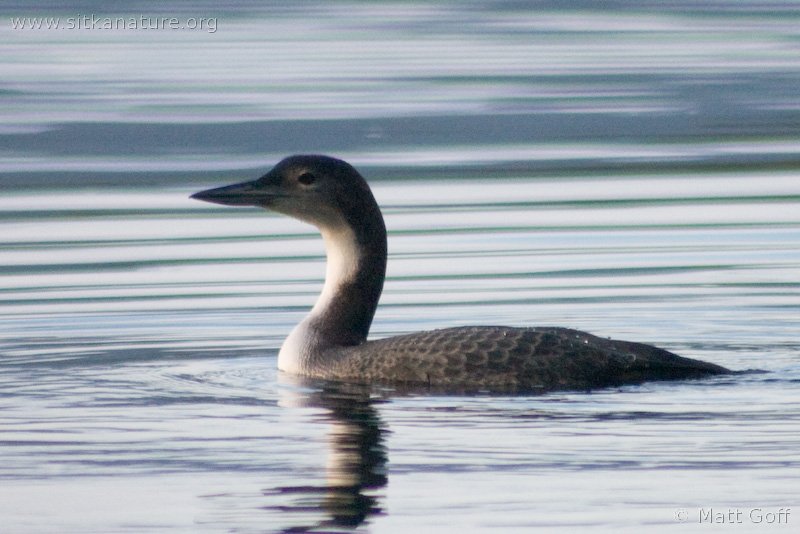
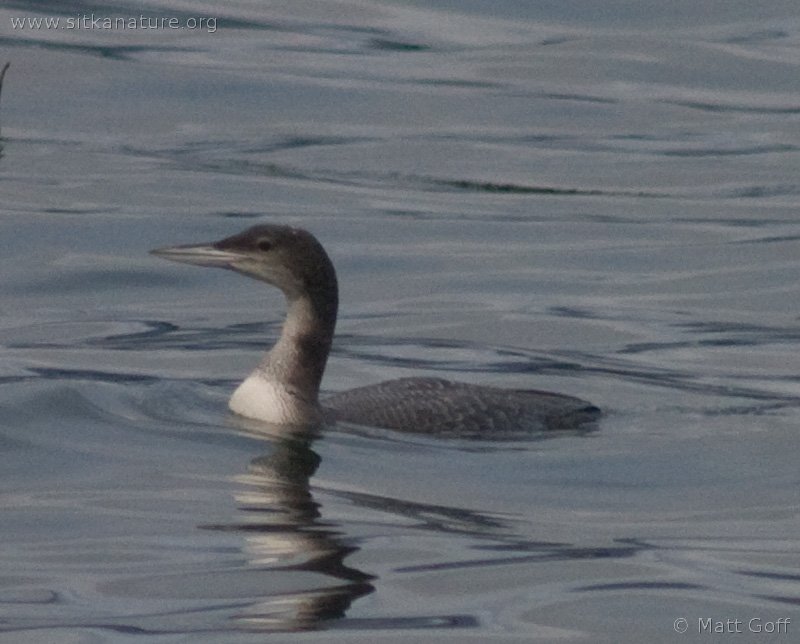
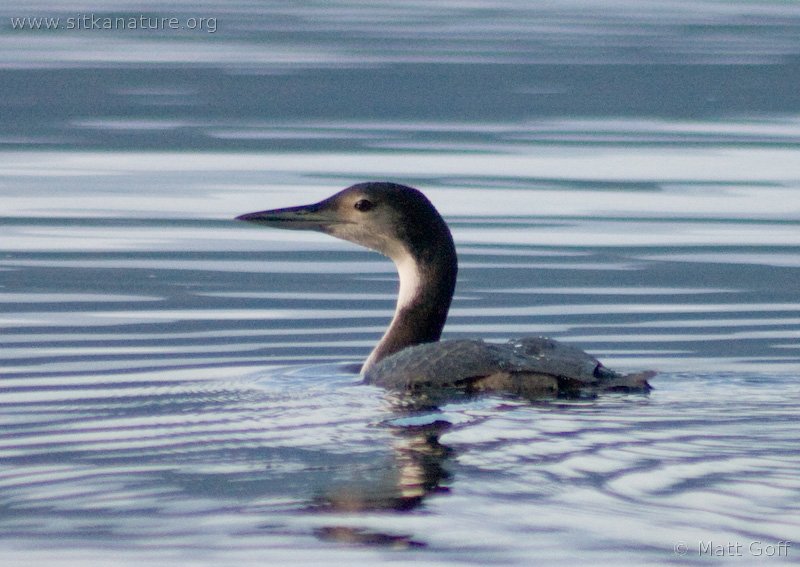

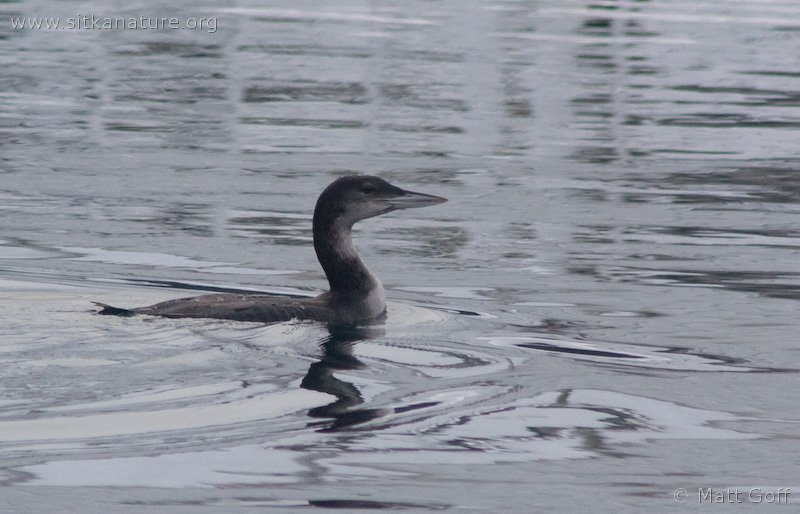
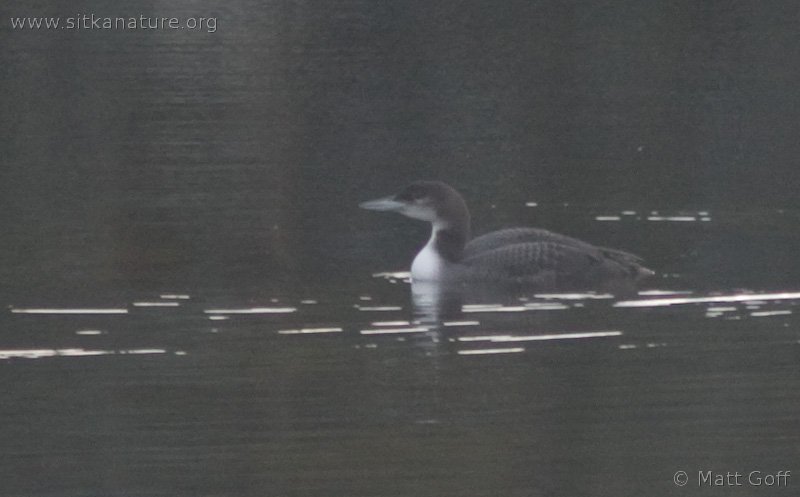
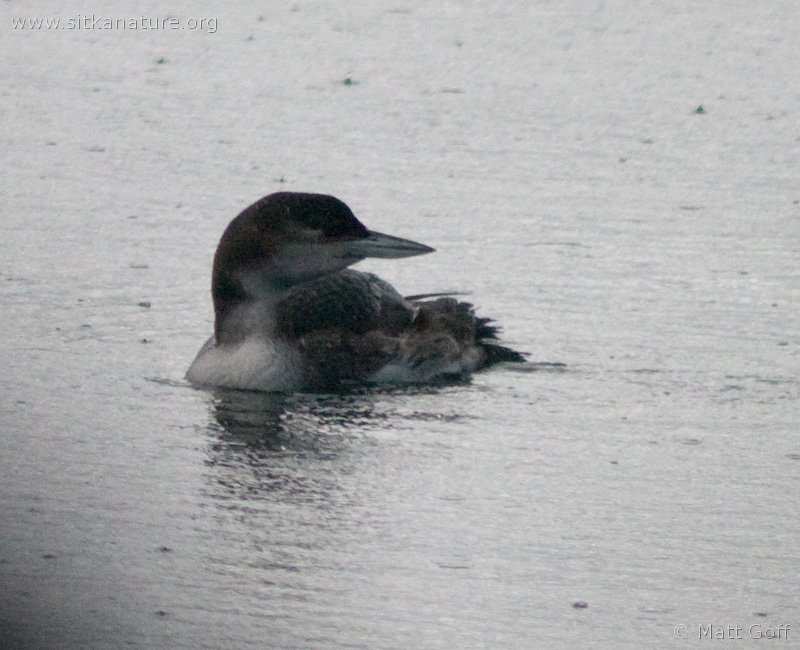
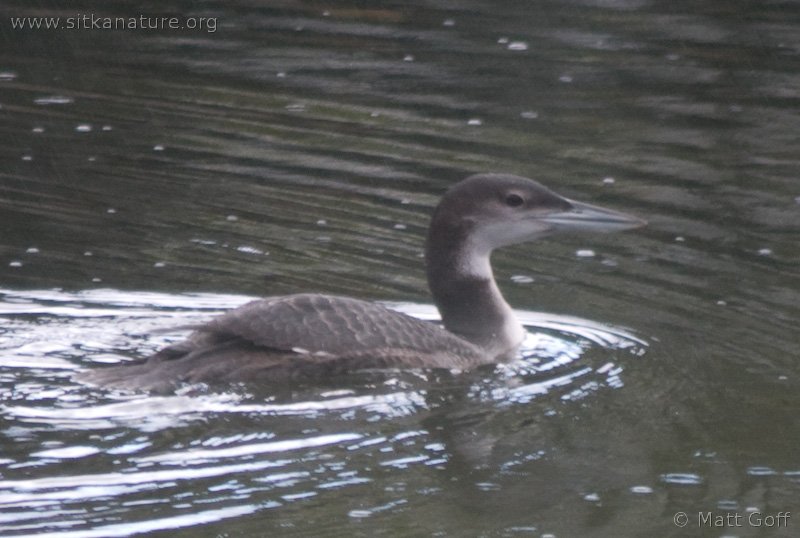
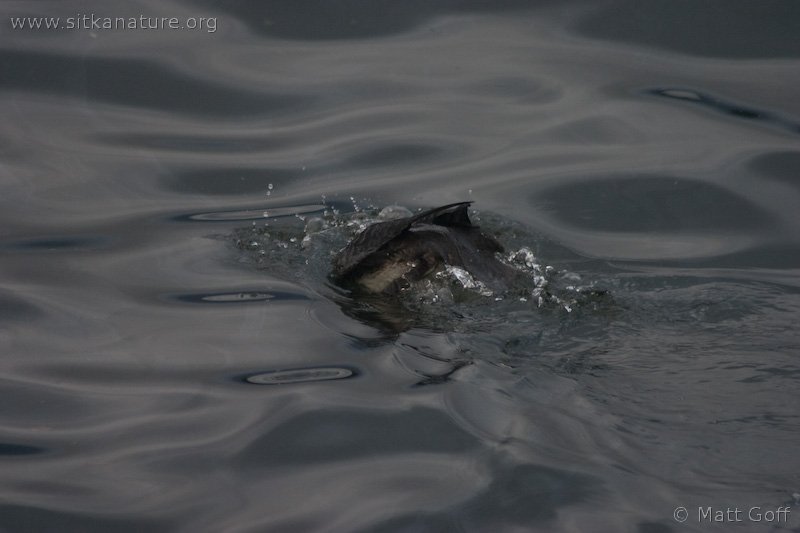
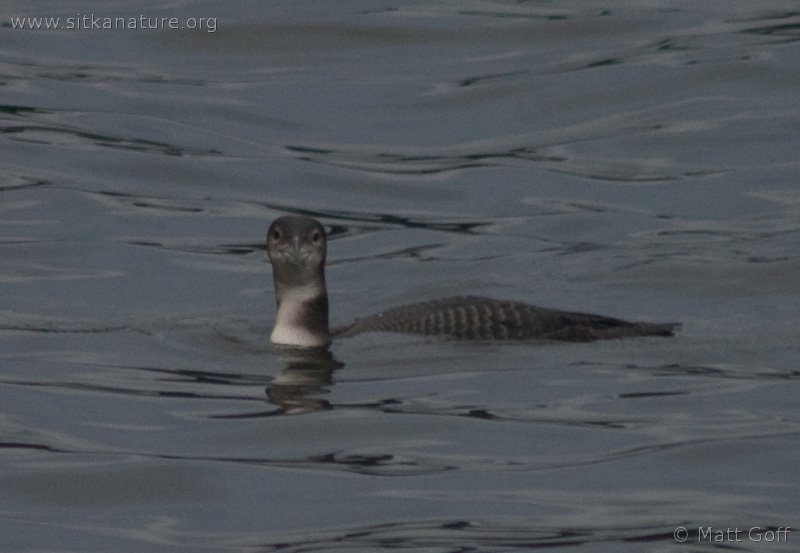
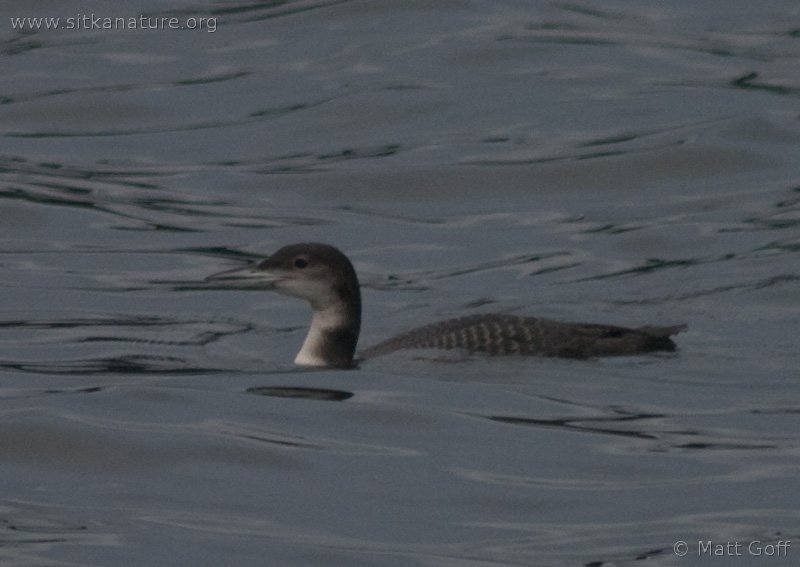
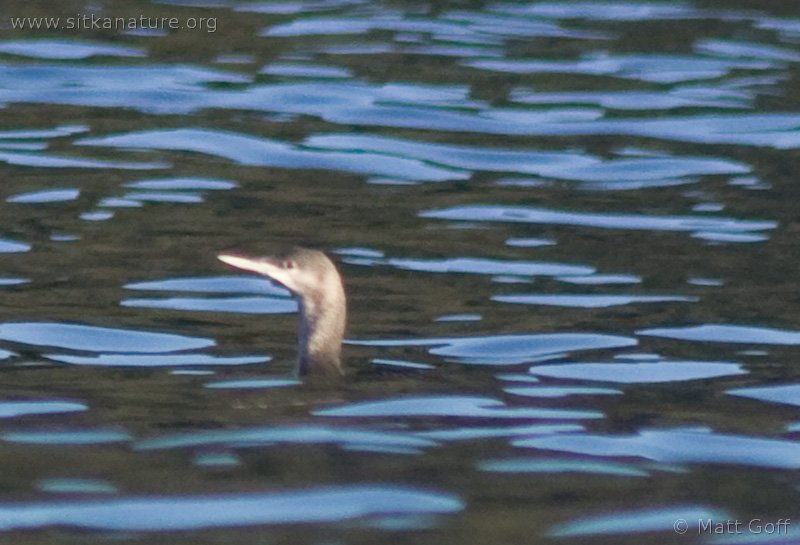
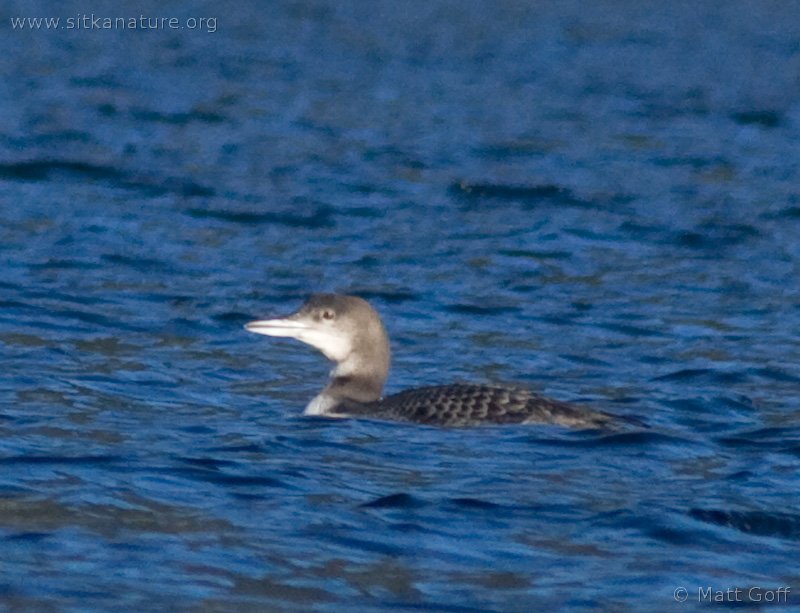
Okay, here’s my completely non-loon-expert take on your photos. The first 2 Pac.loons; next 4 Common loons, The next group of five: Pac not common (eyebrow did it for me), ?, common for the rest. RT loon would be my guess too for the next to last one, followed by common loon.
Carolyln H.
Thanks for the comments. After experiencing a little confusion trying to figure out which loons you were referring to, I realized it would be helpful to add numbers to each. I have also added a comparison at the top which leads me to change my mind about Birds #5 and #6, they now seem more likely to be Pacific Loons. I think that’s what you are suggesting as well.
One of the things I am hoping for is a little bit of a discussion about the variability of loon features within individuals and species. For example, presumably the neck can look thicker or thinner depending on whether it is stretched out or not. Perhaps the apparent size of the bill is subject to variation depending on posture as well. I would also imagine that there is variation among individuals within a species, but I really have no idea as to the extent of such variation. For me, as a relative newcomer to the challenges of bird identification, I think it would be helpful for me if I can get input from someone with the experience and understanding to be able to comment on the range of variation of particular characteristics, how much, if any, overlap there might be between species, and which things to emphasize if the evidence seems to be somewhat conflicting.
Matt??
I’m not a loon expert either, but I am the state Waterfowl Coordinator and have been involved with loons, in the field or planning conservation efforts, for a long time. For ID assistance, I recommend Tamara Mills at USFWS in Anchorage 786-3517. She runs their loon programs and knows local experts.
In my assessment of the photos, I think there is a good chance that bird #4 is a yellow-billed loon (the right photo only) Right #4 has a classic YBLO head shape and angular mandible, but the left photo looks like a different bird. I also think loon #8 could be a YBLO, but the angle is not best for ID. Have a look at these websites:
http://www.absc.usgs.gov/staff/WTEB/jschmutz/jschmutz.htm
http://alaska.fws.gov/mbsp/mbm/loons/species/Yellow-billed-loon.htm
Hope this helps–good luck with the tough ones.
Tom,
Thanks for the comments, information, and links. The interesting thing about it is, I know for certain that both photos for #4 are of the same bird. The one on the left was taken first, then I took the second one after walking down on the breakwater to get closer. Obviously the lighting was not fantastic.
Yellow-billed Loon is certainly a possibility worth considering. I know they have been observed here before. However, based on what I have seen in the field guides, I would think the birds I have seen did not have yellow enough bills, and were too dark and/or gray for Yellow-billed Loons. However, I do not have a sense of the variation present in the species, so I don’t know.
Matt
In looking back through my photos I realized that one of the photos I had included with Birds #5 and #6 actually belongs to Bird #4. It was taken after the bird stopped preening and started diving and feeding. This third photo is similar enough in appearance to photos for Birds #1, #2, #3, #5, and #6, that I’m now leaning toward considering them all first year Common Loons.
I think they are all Common Loons except for #7 which looks like a Red-throated. As you note, the one photo of that bird makes it difficult to tell, however the uptilted bill posture and lack of any distinctive dark/light division on the neck are suggestive of Red-throated. It was suggested that one of the birds might be a Yellow-billed. Superficially, it looks like a YBLO because it has an unusually large bill, however the top of the bill is dark from tip to base, the head is very dark for an imm. YBLO, and the head shape looks good for Common. I think the big problem here is that Common Loons, especially young Common Loons, are highly variable plumage-wise. Structure should be a huge clue to what the birds are, and plumage should come second because it is variable and subject to misinterpretation. In several of your comments, you say that the birds lack a partial white collar or don’t have as much white around the eyes as you think a Common should have, yet when I look at the photos I see a partial collar and normal white around the eye for Common Loon. None of these birds looks like a Pacific structurally, and the fact that some of them show some vaguely PALO like neck pattern features is merely coincidence.
Matt,
Great stuff!
None of these loons are Pacific Loons; all but one are Common Loons. Bird #7 is without doubt a Red-throated Loon and not a YBLO (based on head shape and bill size/shape).
The vertical neck line is a good trait for Common Loon; all your birds show the slightly notched or irregular vertical neck line of a Common Loon. Only photo #1 is slightly suggestive of Pacific Loon, but the slight notch on the neck and bill shape quickly rule out that species and confirm it as Common Loon.
Keep up the great work and wonderful photos!
Jake
Aaron and Jake have it right. All Commons, save the one Red-throat.
I’d vote for red-throated for #7 too. the more delicate, upturned bill is the giveaway.